With its eye-catching, vibrant yellow-green color, Zunda Mochi is a delightful traditional Japanese sweet made from edamame. It offers a uniquely sweet flavor and a soft, pleasantly chewy texture that you are sure to love.
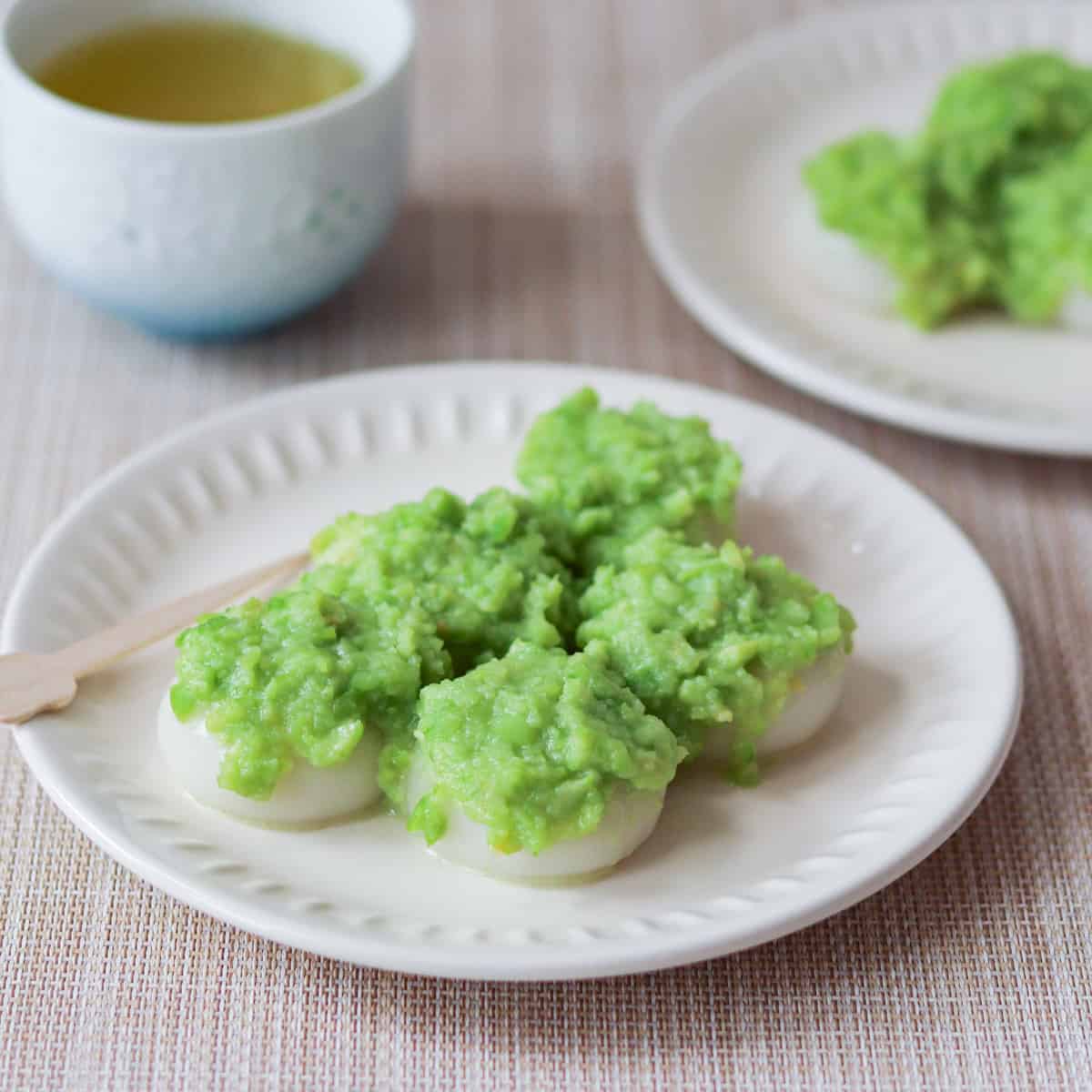
Jump to:
What is Zunda Mochi?
Zunda Mochi is a traditional Japanese sweet made with sweetened mashed edamame paste placed on top of mochi (Japanese rice cakes) or dango (Japanese rice dumplings). "Zunda" refers to mashed edamame, and the eye-catching yellow-green color of this dessert comes from the edamame paste.
It originated as a local specialty in Miyagi Prefecture, Japan, and has gained popularity nationwide due to its delightful taste and vibrant appearance. While mochi and dango are commonly enjoyed with toppings such as anko (sweet red bean paste), kinako (roasted soybean flour), or kuromitsu (brown sugar syrup), zunda mochi offers a unique experience by not using any of these.
In recent years, various desserts incorporating zunda paste—such as shakes, puddings, and dorayaki (sweet bean paste pancakes)—have become increasingly popular, reflecting how much people have come to love this treat.
So, what is Edamame?
Edamame, the main ingredient of zunda, is soybeans harvested while still immature. In Japan, it is sometimes classified as a vegetable rather than a legume from a nutritional standpoint, as it offers the following nutrients, combining the benefits of both food groups:
- Protein
- Isoflavones
- Dietary fiber
- Iron
- Methionine
- Vitamins B1 and B2
- Potassium
Recently, it has gained recognition outside of Asia due to growing health consciousness. You can find fresh edamame during the hot summer months and frozen edamame year-round.
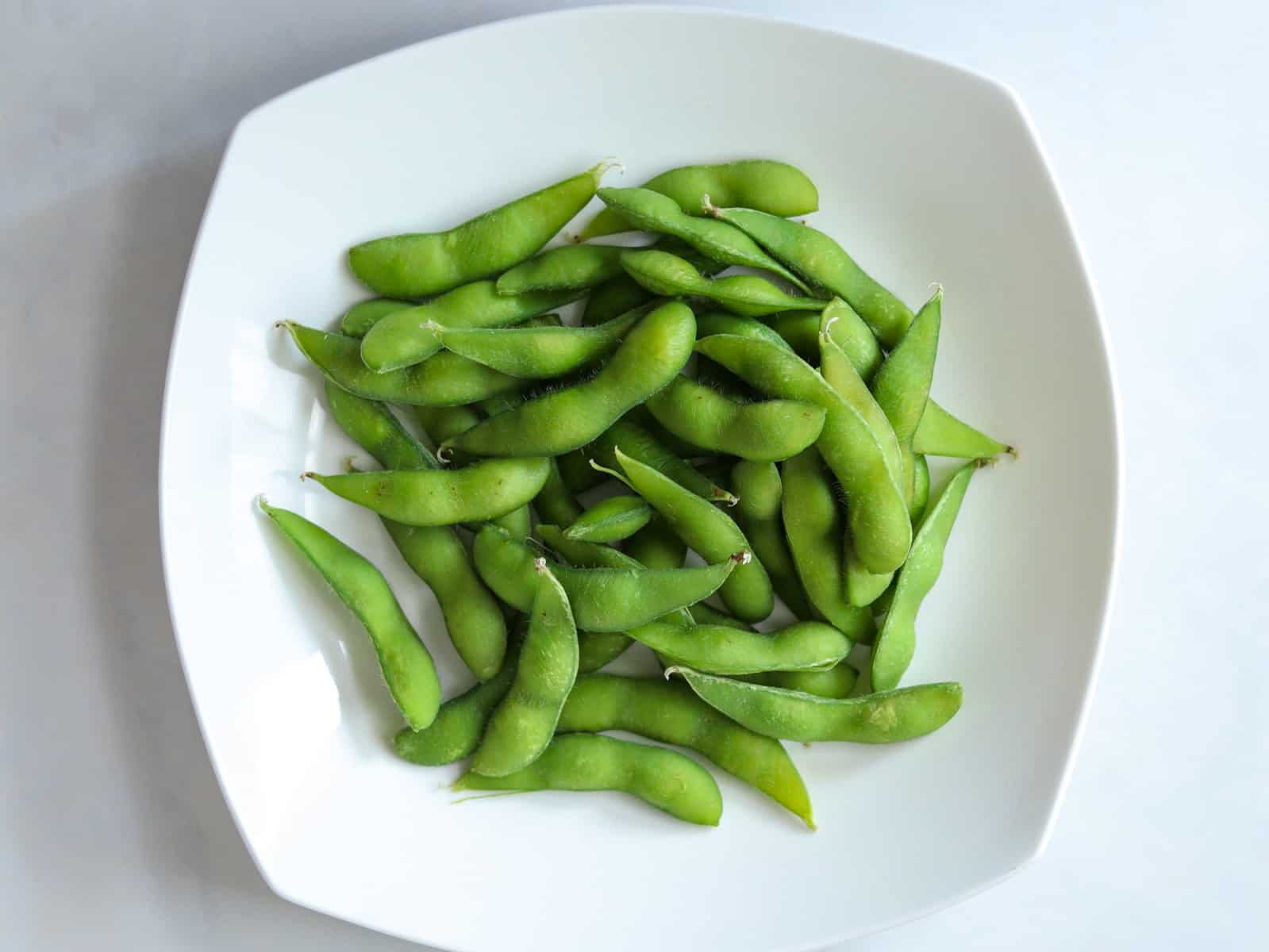
Zunda Mochi or Zunda Dango?
Despite its name, zunda mochi isn't always made with mochi. While mochi is certainly used, it is also common—especially in home cooking—to use dango instead.
The main difference between mochi and dango lies in how they are made: mochi is made by pounding steamed glutinous rice until it becomes sticky and elastic, whereas dango is made by kneading rice flour with water and shaping the dough into small balls.
Freshly pounded mochi is soft and ideal for zunda mochi, but it hardens quickly and takes a lot of effort to make from scratch. Additionally, store-bought mochi often doesn't have as soft a texture as freshly pounded mochi. That’s why dango—since it is much easier to make—is typically used when preparing this dessert at home.
Zunda mochi made with dango is also called "zunda dango," but generally, it is still referred to as "zunda mochi," as there is little difference in taste or appearance between the two.
While there are many types of dango, the most commonly used for zunda mochi is shiratama dango, known for its smooth, soft, and chewy texture. In this recipe, I also use it instead of mochi and will show you how to make it. Of course, you can use other types of dango or mochi if you prefer, so feel free to experiment based on your taste.
If you would like to learn more about making Shiratama Dango, please refer to the linked page.
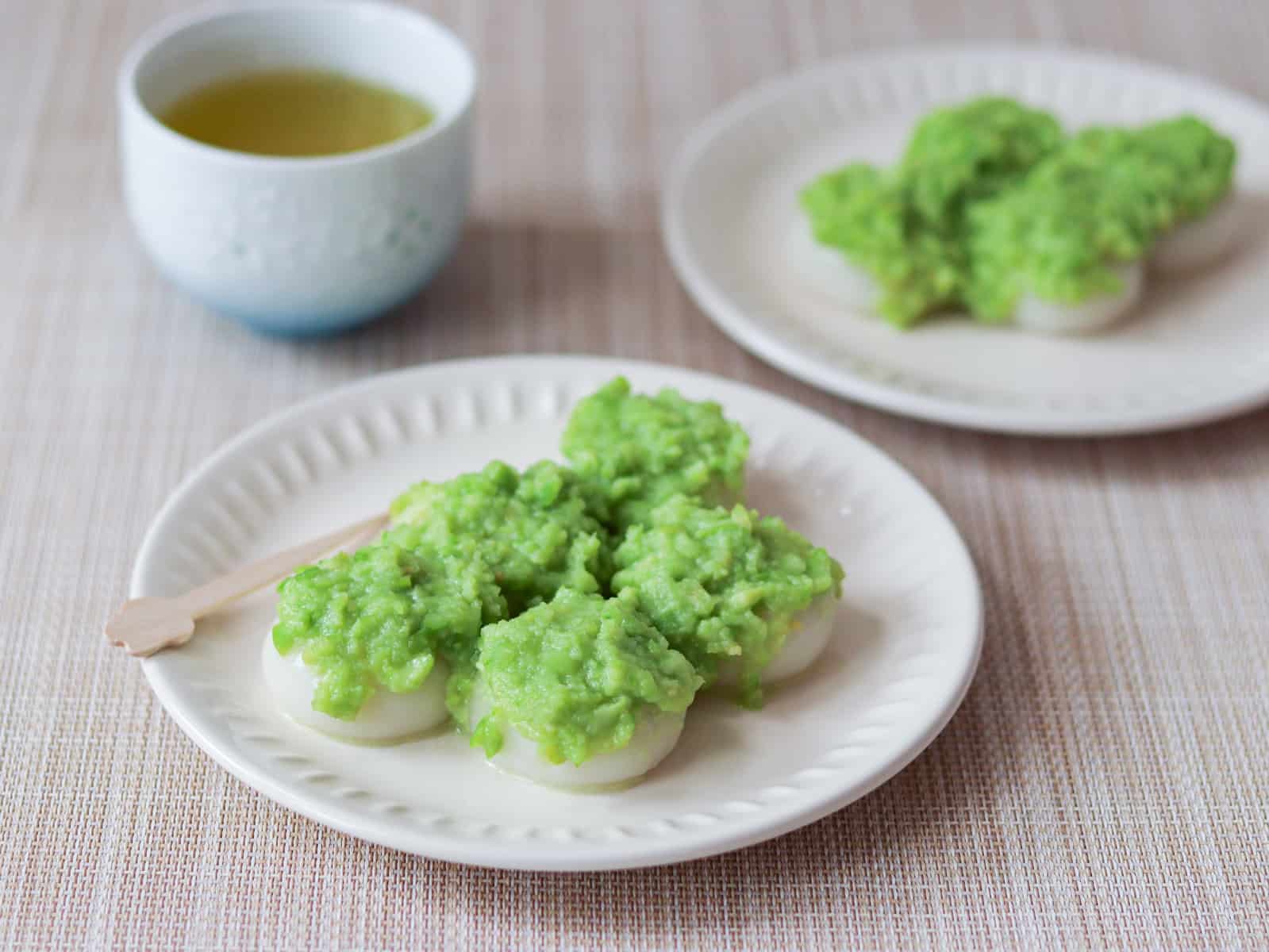
📋Step-by-step recipe
Equipment
- a mortar and pestle (or a blender)
Ingredients
Zunda paste:
- 5.3 oz frozen or fresh edamame in pods (If using shelled edamame, use 45% of the weight of edamame in pods—that is, about 2.4 oz/67 g for 2 servings.)
- 1 Tbsp water
- 1 ½ Tbsp sugar
- ⅛ tsp salt
Shiratama dango:
- 3.7 oz shiratamako (白玉粉) (a type of Japanese rice flour used to make shiratama dango)
- ⅖ cup water
Instructions
🕒 Total: 50 mins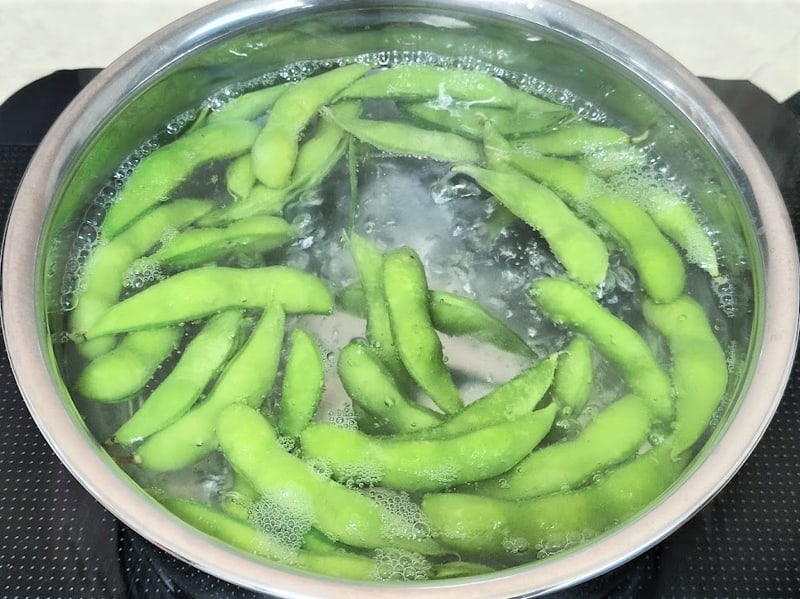
Step 1
(If using frozen edamame) Let the frozen edamame pods thaw in advance. You can let them thaw naturally at room temperature, or use a microwave or briefly boil them to speed up the process. If you are using uncooked frozen edamame, be sure to boil them for about 5 minutes.
(If using fresh edamame) Boil the fresh edamame for about 4 minutes over medium-low heat until tender.
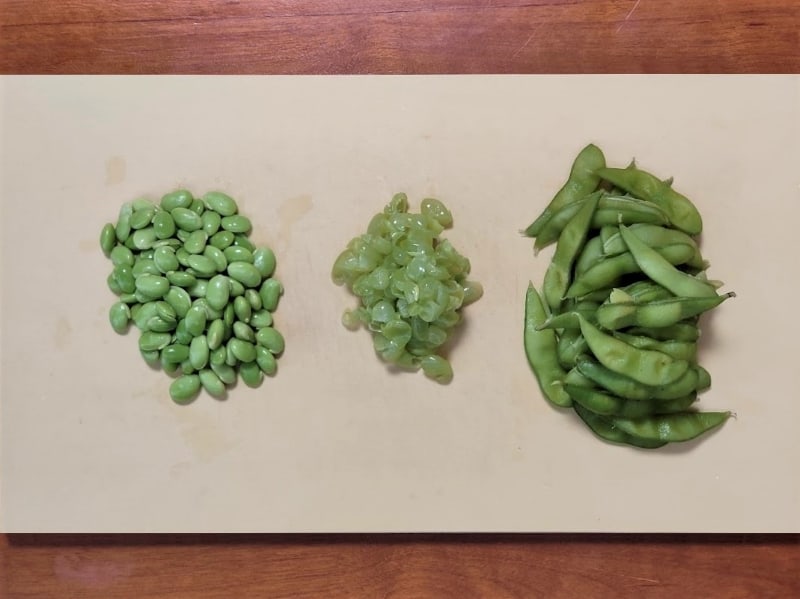
Step 2
Remove the beans from the edamame pods, then peel off the thin skin covering each bean.
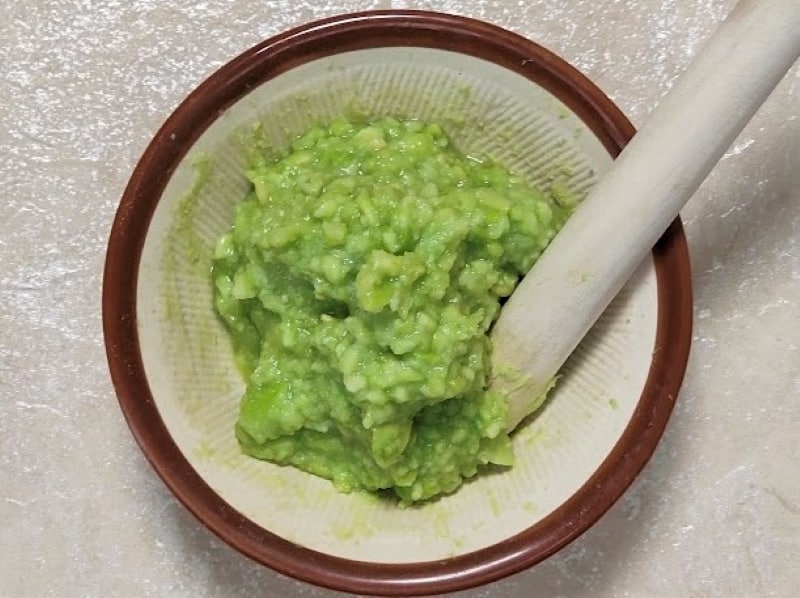
Step 3
Mash the edamame beans to a slightly coarse consistency using a mortar and pestle or a blender. Mix water, sugar, and salt into the mashed edamame. Zunda paste is ready.
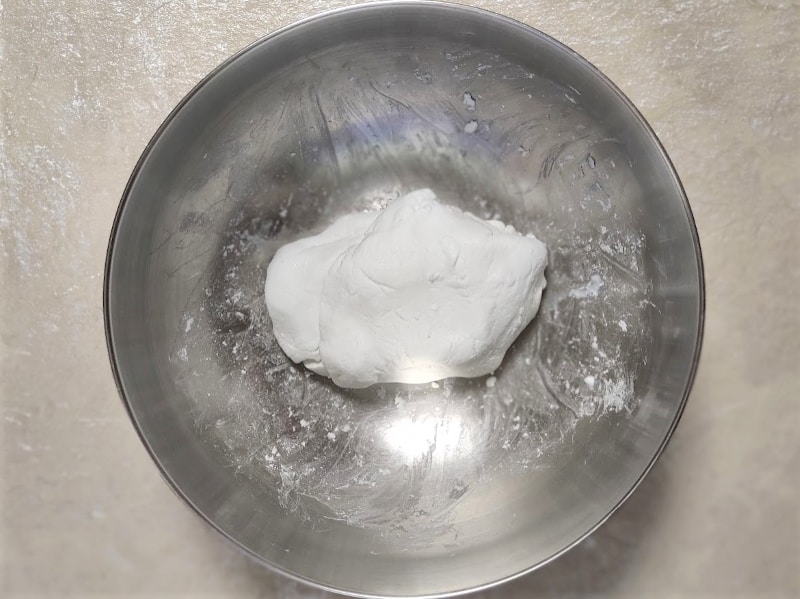
Step 4
Put shiratamako in a bowl and knead it while gradually adding water. If the dough doesn't come together, add a small extra amount of water (about ½ Tbsp) and continue adjusting until it forms properly.
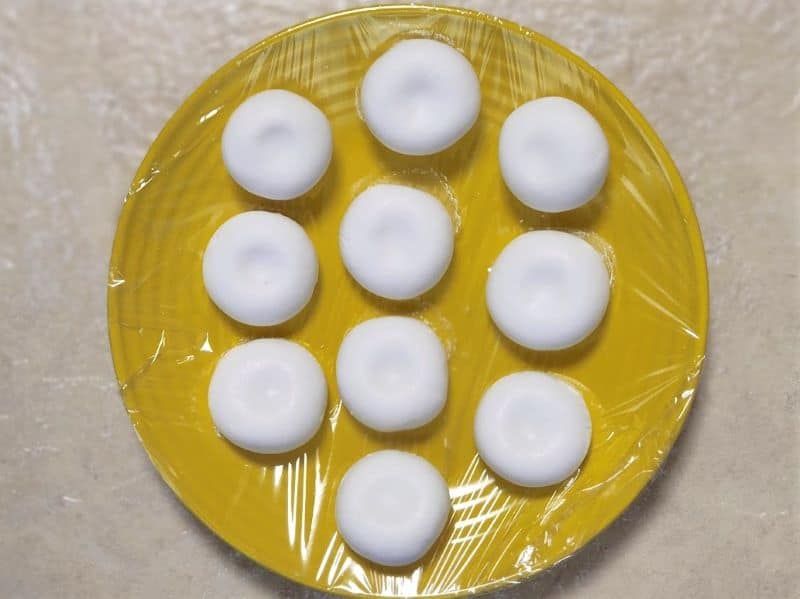
Step 5
Once the dough reaches a soft, earlobe-like consistency, shape it into small balls—about 0.7 oz (20 g) each—by rolling each piece between your palms. After that, make a small indentation in the center of each ball with your finger to help them cook more evenly.
It is best to place each ball on a plate lined with plastic wrap to prevent sticking.
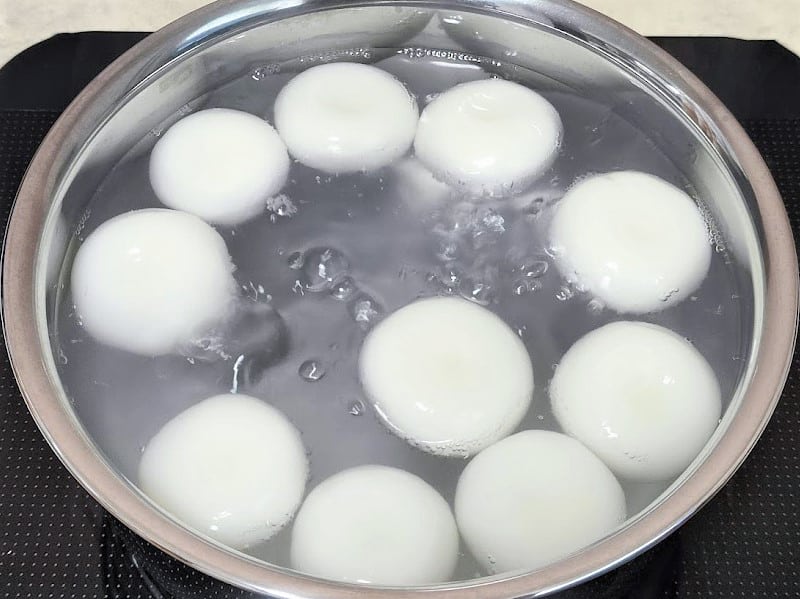
Step 6
Fill a pot with plenty of water and bring it to a boil. Once boiling, add the dough balls and cook them over medium heat for about 5 minutes, until they rise to the surface. After all the dough balls have floated, continue cooking for a few more minutes.
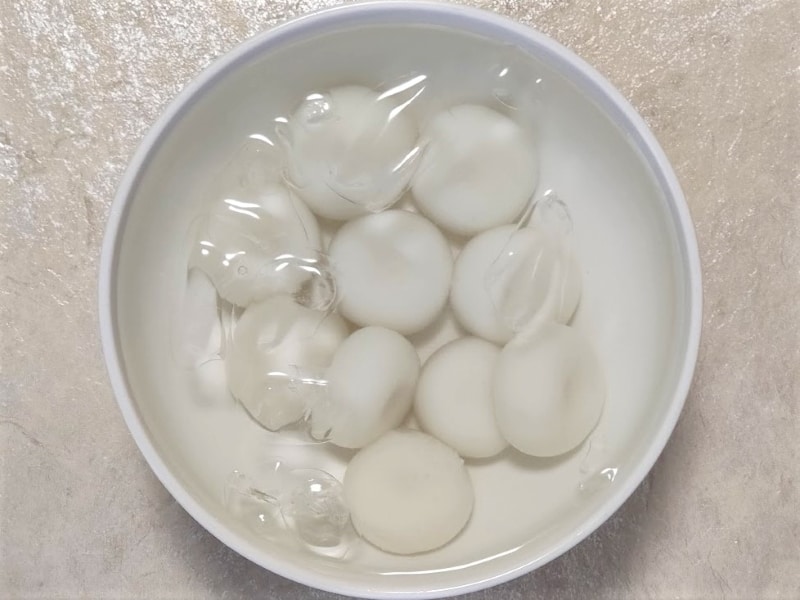
Step 7
Fill a bowl with ice water or cold water. Transfer the cooked dough balls to the bowl and let them cool for about 5 minutes.

Step 8
Drain the rice dumplings in a colander. Serve them on plates and top with the zunda paste.
To store
You can store it in the refrigerator for up to 2 days. However, it is best to enjoy it on the same day it is made, as the texture tends to deteriorate over time. There are also ways to preserve the texture, though they may slightly affect the flavor.
Cooking tips
When forming the dough, be careful not to add too much water. Excessive water can keep the dough from coming together properly. Even if it seems like the dough needs more water, be sure to add it gradually and in small amounts.
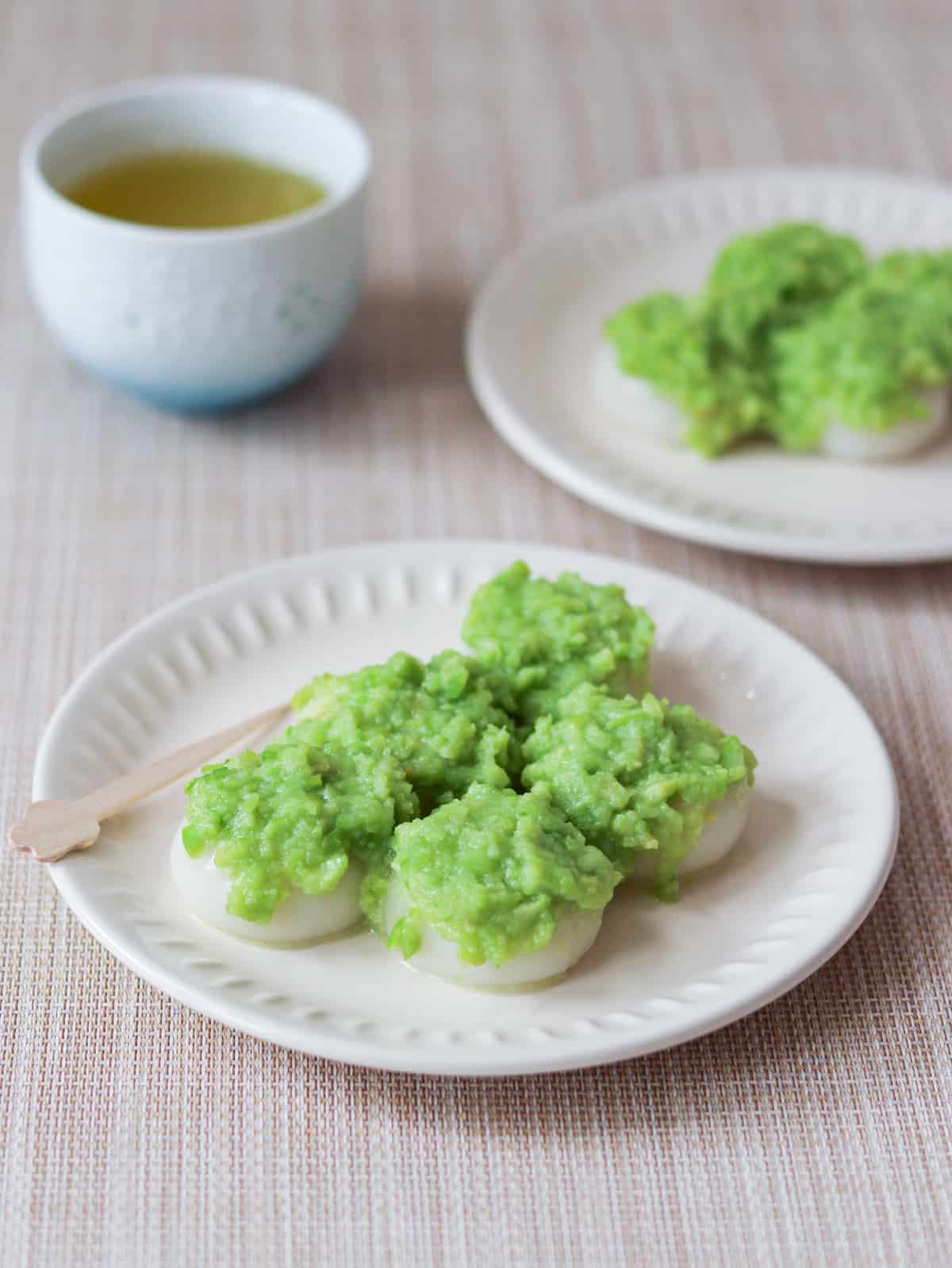
If you try this recipe, I’d love to hear what you think. Please consider leaving a review and star rating in the comments below. If you enjoyed it, I’d really appreciate it if you shared it with your friends.
More mochi and dango recipes you'll probably love
Recipe card

Zunda Mochi (Rice Cakes with Sweet Edamame Paste)
Equipment
- a mortar and pestle (or a blender)
Ingredients
Zunda paste:
- 5.3 oz frozen or fresh edamame in pods (If using shelled edamame, use 45% of the weight of edamame in pods—that is, about 2.4 oz/67 g for 2 servings.)
- 1 Tbsp water
- 1 ½ Tbsp sugar
- ⅛ tsp salt
Shiratama dango:
- 3.7 oz shiratamako (白玉粉) (a type of Japanese rice flour used to make shiratama dango)
- ⅖ cup water
Instructions
- (If using frozen edamame) Let the frozen edamame pods thaw in advance. You can let them thaw naturally at room temperature, or use a microwave or briefly boil them to speed up the process. If you are using uncooked frozen edamame, be sure to boil them for about 5 minutes.(If using fresh edamame) Boil the fresh edamame for about 4 minutes over medium-low heat until tender.
- Remove the beans from the edamame pods, then peel off the thin skin covering each bean.
- Mash the edamame beans to a slightly coarse consistency using a mortar and pestle or a blender. Mix water, sugar, and salt into the mashed edamame. Zunda paste is ready.
- Put shiratamako in a bowl and knead it while gradually adding water. If the dough doesn't come together, add a small extra amount of water (about ½ Tbsp) and continue adjusting until it forms properly.
- Once the dough reaches a soft, earlobe-like consistency, shape it into small balls—about 0.7 oz (20 g) each—by rolling each piece between your palms. After that, make a small indentation in the center of each ball with your finger to help them cook more evenly.It is best to place each ball on a plate lined with plastic wrap to prevent sticking.
- Fill a pot with plenty of water and bring it to a boil. Once boiling, add the dough balls and cook them over medium heat for about 5 minutes, until they rise to the surface. After all the dough balls have floated, continue cooking for a few more minutes.
- Fill a bowl with ice water or cold water. Transfer the cooked dough balls to the bowl and let them cool for about 5 minutes.
- Drain the rice dumplings in a colander. Serve them on plates and top with the zunda paste.
Notes
- You can store it in the refrigerator for up to 2 days. However, it is best to enjoy it on the same day it is made, as the texture tends to deteriorate over time. There are also ways to preserve the texture, though they may slightly affect the flavor.

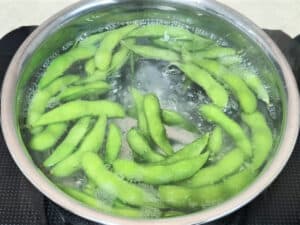
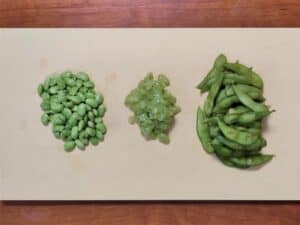
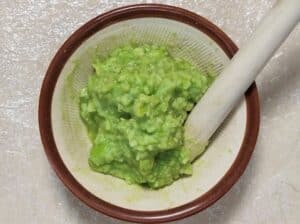

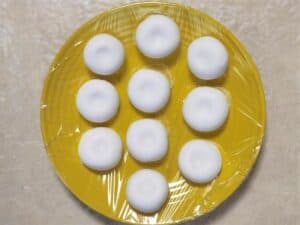
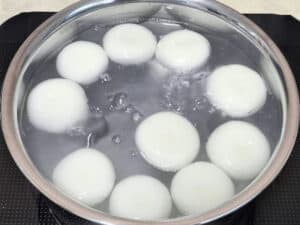
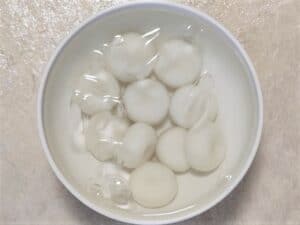
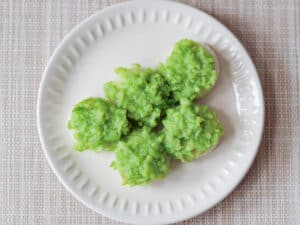
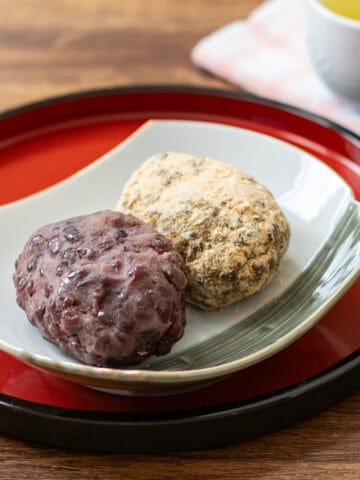
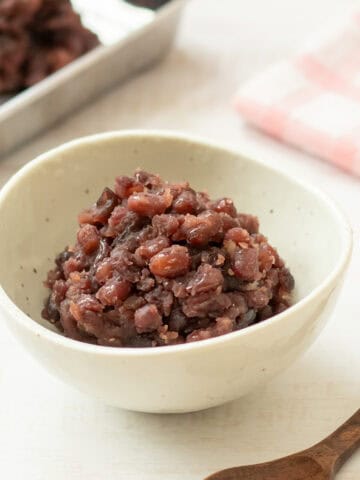
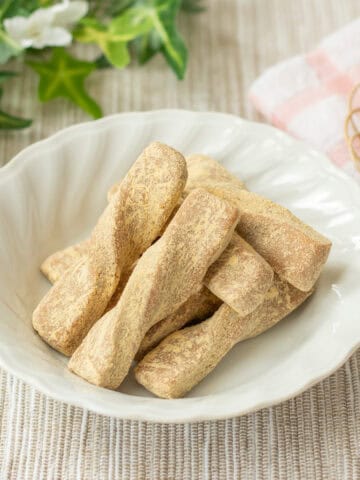
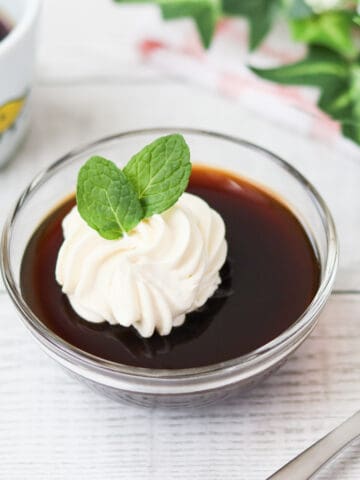
Leave a Rating and a Comment